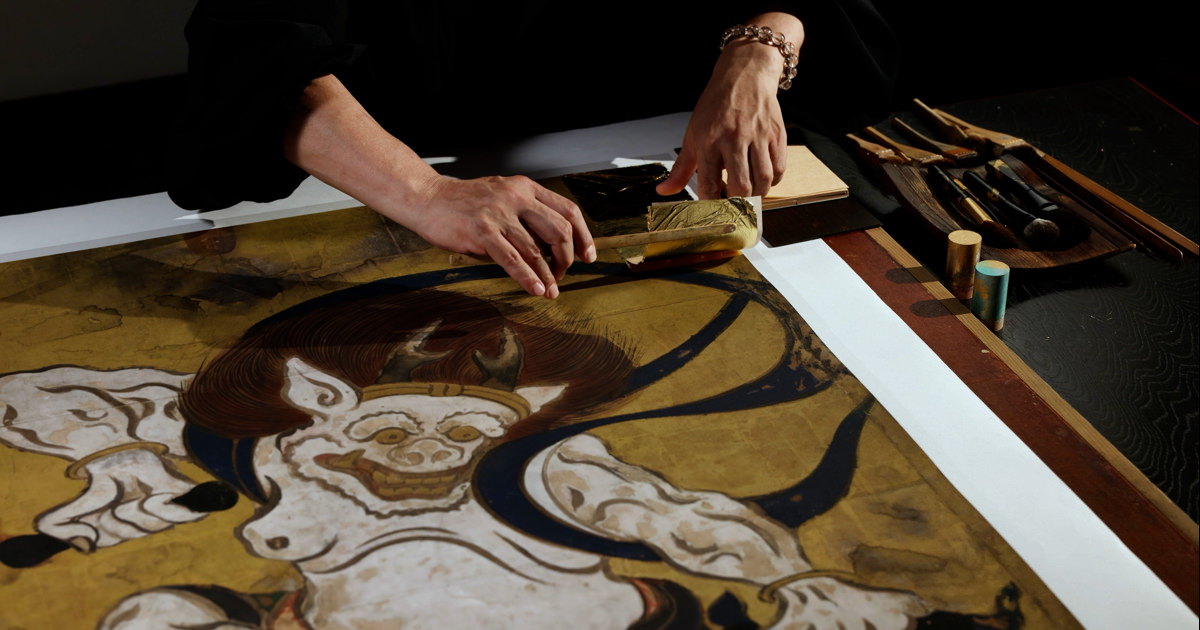River Festival at Tsushima Shrine
High-resolution facsimiles
- Material
- printed, gold on washi paper
- Period of creation
- Tsuzuri Project Stage 11 2017–2018
- Recipient
- Tsushima city/Aisai city
Original
- Historical era
- Edo (17th century)
- Material
- ink, color, and gold on washi paper
- Medium
- pair of eight-fold screens
- Size
- Each screen H151.5 × W474.0 cm
- Collection
- British Museum
Description
Boasting a tradition of nearly 600 years, the Owari Tsushima Tenno Festival, the biggest festival of Tsushima Shrine, is known as one of Japan‘s three major river festivals due to its grandeur. This work is a pair of eight-fold screens. On a gold background, it depicts scenes of the boat festival on the Tenno River, the climax of the festival, which was held in the early evening of June 14 and the following morning of the lunar calendar (now the fourth Saturday in July and the following day). The right screen shows a scene on the Tenno River on the eve of the festival when five makiwara boats decorated with countless lanterns head towards the otabisho temporary shrine at the foot of the Tenno Bridge. The left screen represents a complete change from the eve of the festival and depicts the morning festival in which the boats built with cabins and decorated with Noh dolls and dragons are rowed on the river. At present, eight folding screens in which this festival was depicted have been confirmed in Japan and abroad, and this work is considered to be the oldest from its style. In addition to the boats on the river, the lively scenes on both banks of the river are drawn elaborately, which gives this work high value even as a genre painting of the first half of the Edo period.
*In order to view videos, it is necessary to consent to the use of cookies by our website.
If the videos are not displayed, please click the “Cookie Settings” and accept cookies.




